
One of the most distinguishing elements of music that a beat maker or producer should have a good understanding of is pitch. A huge proportion of Western music theory focuses on pitch. If you want to be able to sample in key, use the correct chords in certain situations, tune vocals, and utilize many more production techniques, you should have a solid comprehension of pitch in music. This article will help you wrap your head around the basics.
Jump to these sections:
Follow along with Komplete Start, a free collection of professional instruments, sounds, effects, and more to help you produce your best music.
What is pitch in music?
Pitch in music refers to the relative “lowness” or “highness” of a note. It is determined by the frequencies of particular soundwaves as higher frequencies produce higher pitches and vice versa.
Before getting to the many potential applications of this knowledge – like pitch correcting or pitch shifting – we should lay down a more in-depth explanation of pitch in music. So what exactly is it?
Musical notes and relation to pitch
Musical notes and their names are our way of writing down the music we hear, perform, and create. Writing down and naming the pitches we hear is beneficial for us as we can establish systems that we can use to compose music, or perform other people’s music. Through creating a common language, we can make rules of composition (and, inevitably break those rules).
In Western music theory, we have named pitches based on the first seven letters of the English alphabet – A, B, C, D, E, F, G. Moving forward through those letters with their corresponding notes results in a gradually rising pitch. Moving backward, conversely lowers the pitch.

To extend the pitch range, note names repeat themselves. When we arrive at the same letter name after we have moved through a full set, the repeated name sounds very similar to the original note. The key difference here is that although it sounds extremely similar, it is higher or lower than the original note. We, therefore, say that the repeated letter name is in a different “octave.”

We assign numbers to letter names to distinguish which octave a specific pitch lies in. This low E is called an E2:
And this high E is called an E5:
Played at the same time, they almost sound like the same note:
These E notes share a letter name and sound very similar, but their numbers differ to indicate which octave they lie in.
Some people use the word “tone” interchangeably with “pitch.” But there is a distinct difference between tone vs pitch. Tone usually refers to the character or timbre of a sound. When using the word “tone” in the context of notes, it has to do with a music pitch interval (meaning the space between two distinct pitches).
Create melodies and harmonies
Pitch is a fundamental component of all melodies and harmonies.
Melodies are sequential arrangements of pitches played in rhythm. When we play one pitch after another in a particular contour or shape, they significantly impact the emotional resonance of a melody.
On the other hand, we create harmony when pitches are played simultaneously rather than sequentially. These pitches form chords that consist of stacked pitches that contribute to the overall sonority of a composition. If these simultaneous pitches are harmonious and sound smooth we say that they are “consonant.” If they sound like they are clashing they are called “dissonant.”
Melodies and harmonies are created through the thoughtful selection and arrangement of different pitches. Composers, beatmakers, and producers combine clever use of pitch along with other elements of music like rhythm and arrangement to create compelling music.
Frequencies and their roles in determining pitch
Understanding the relationship between frequency and pitch in music is extremely helpful if you want to implement techniques like synthesis, EQ, and pitch shifting.
Sound is measured by describing the number of oscillations of vibrations per unit of time. In other words, how ‘frequently’ the vibration is occurring. That frequency is measured in hertz (Hz).
If a sound oscillation occurs very quickly we say that the wave has a high frequency. High-frequency oscillations also result in our perception of high pitch – like the E5 from earlier. Slower sound oscillations have low frequency and give us a sense of lower pitch – like the E2.
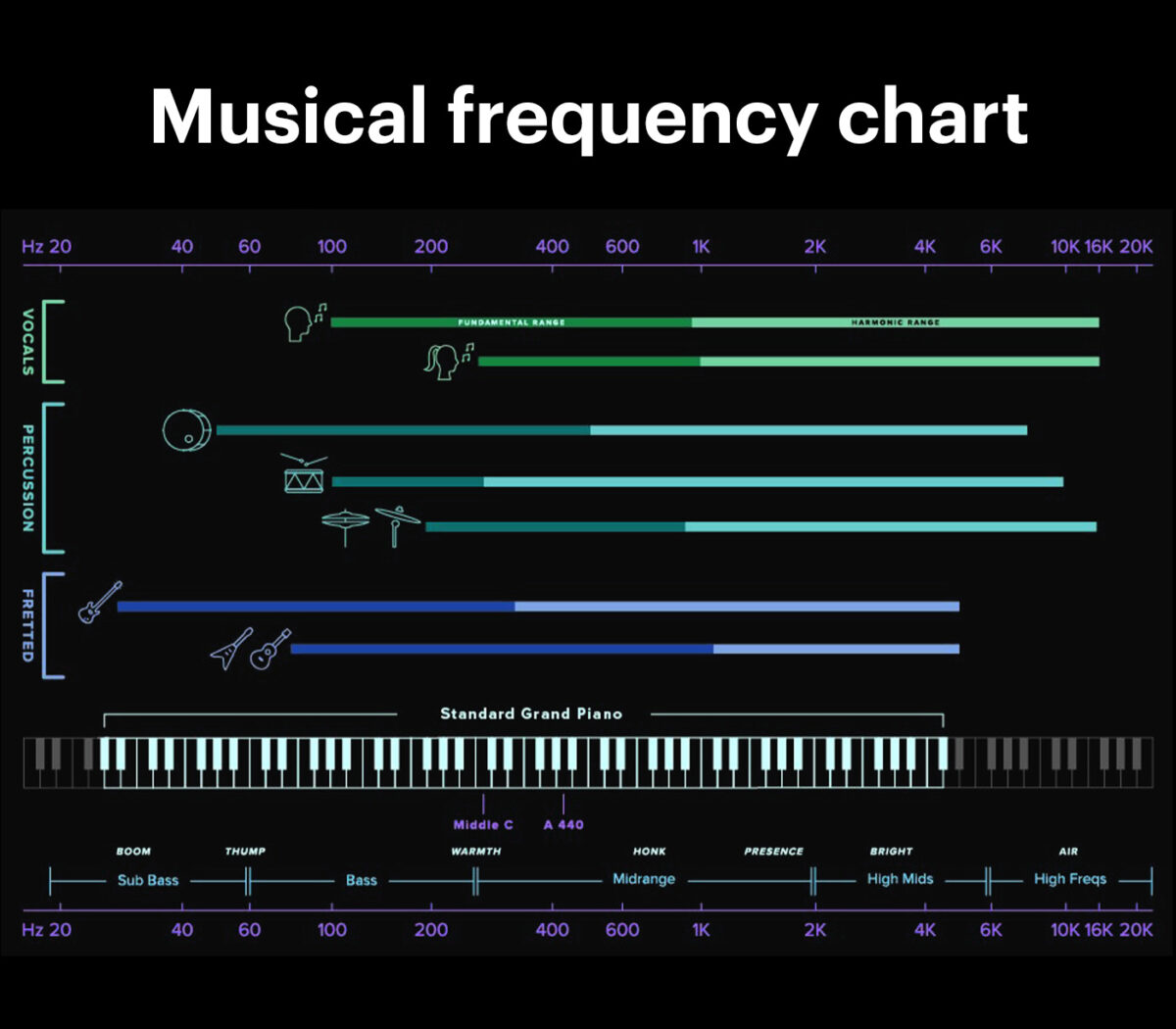
The A above middle C is a particularly important reference point in terms of the relationship between pitch and frequency. This A note is sounded at 440 Hz, and is used as the standard pitch point for musical instrument tuning:
How to use pitch in music production
There are countless ways that you can use pitch in music to elevate your production game. Let’s take a look at four different methods to put what you’ve learned so far into practice:
1. Pitch shifting and transposition
Pitch shifting is a technique used in production to alter pitch without significantly changing other elements of the sound. Pitch shifting is used extremely often when sampling, which is how producers take a sample and change the key from the original version of the song.
Changing a collection of pitches whilst maintaining the relationships between those pitches is referred to as “transposition.”
This video shows how Daft Punk pitch shifted samples across their landmark album “Discovery.”
Samplers like Kontakt make it extremely easy to pitch shift any audio clip. Simply load recorded audio into Kontakt, and click on the edit mode button:
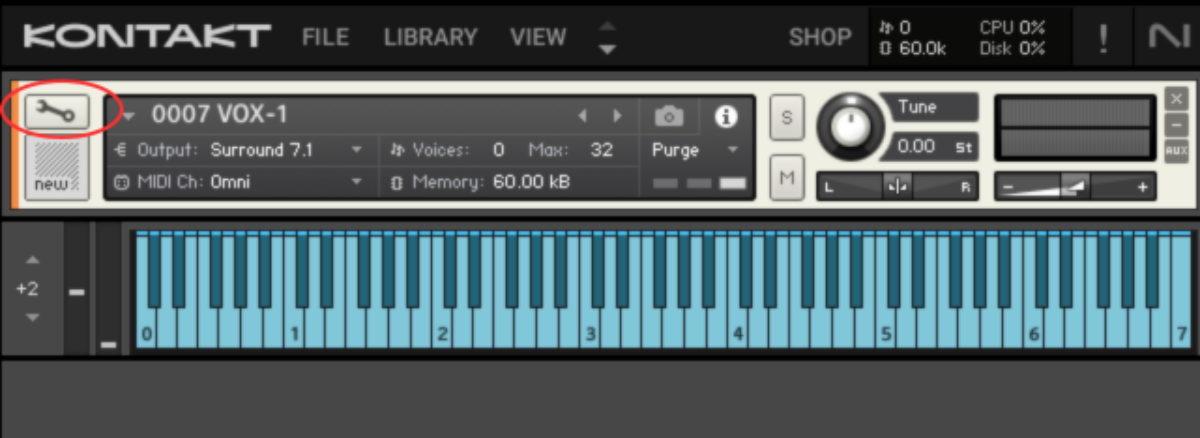
From here you can choose from a range of settings that will help you shift the pitch of your sample. Simply play in your preferred starting pitch on your keyboard, or draw it in through a piano roll.
Pitch correction is another form of pitch shifting, which allows a producer to fix pitch-related errors in a vocalist’s performance. Extremely transparent use of pitch correction can give the famous “auto-tune” effect found prominently in hip hop.
Listen to the character of Travis Scott’s voice on “Antidote.” This sound is achieved through very quick settings that are dialed in while pitch correcting:
Inputting slower variations of pitch correction gives a more natural sound to a vocal.
You can use the Nectar Pitch module by iZotope to create your own tuned vocal textures or simply to clean up a slightly off-key take by a vocalist.
2. Time-based pitch effects
Some effects plugins have options built in that modulate the pitch of the effect over time. This helps create interesting and dynamic textures that change as they play out.
We can hear this kind of time-based pitch effect in “French Toast” (feat. Wale & Joyce Wrice) by Westside Gunn. Listen to the delay on the vocal starting from 0:14.
The Replika XT delay includes an easy way to achieve this sound. By enabling the pitch shifter in the FX section, you can create cascading delays that descend in pitch just like in “French Toast.” Of course, you’re not restricted to that kind of sound. The pitch shifting capabilities are only limited to what you can think of and create through experimentation.
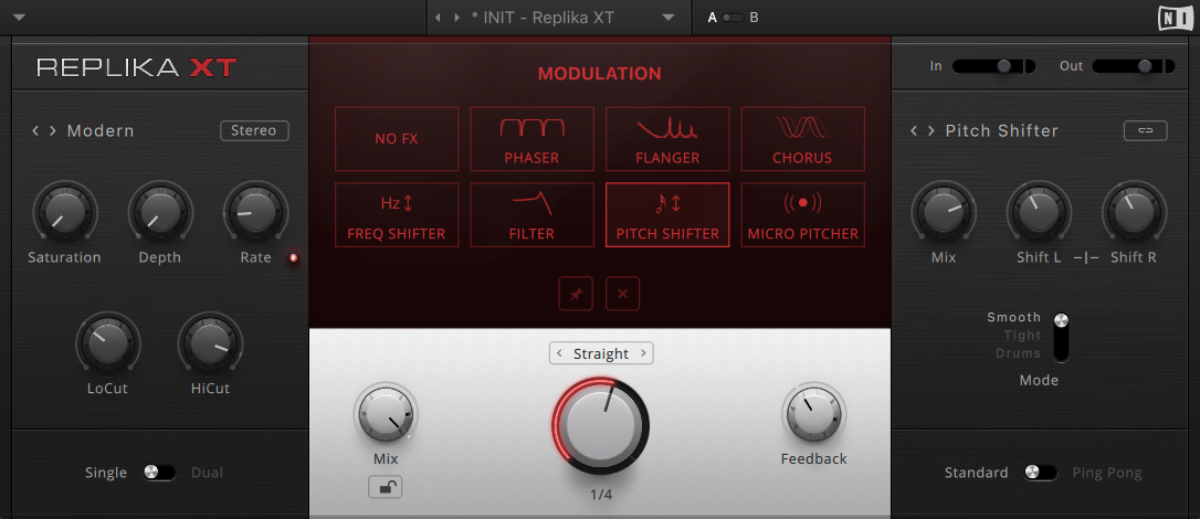
3. Harmonization
Have you ever listened to “Hide and Seek” by Imogen Heap and wondered how she achieved that iconic harmonized sound?
There are various methods you can use to achieve this kind of sound, but all of them involve pitch harmonization.
The tone machine section in Kontakt’s settings allows you to repitch samples or audio files while maintaining the qualities of the original recording. Once the sample is loaded into Kontakt, all you have to do is use MIDI input to control which harmonies you want to hear under the original.
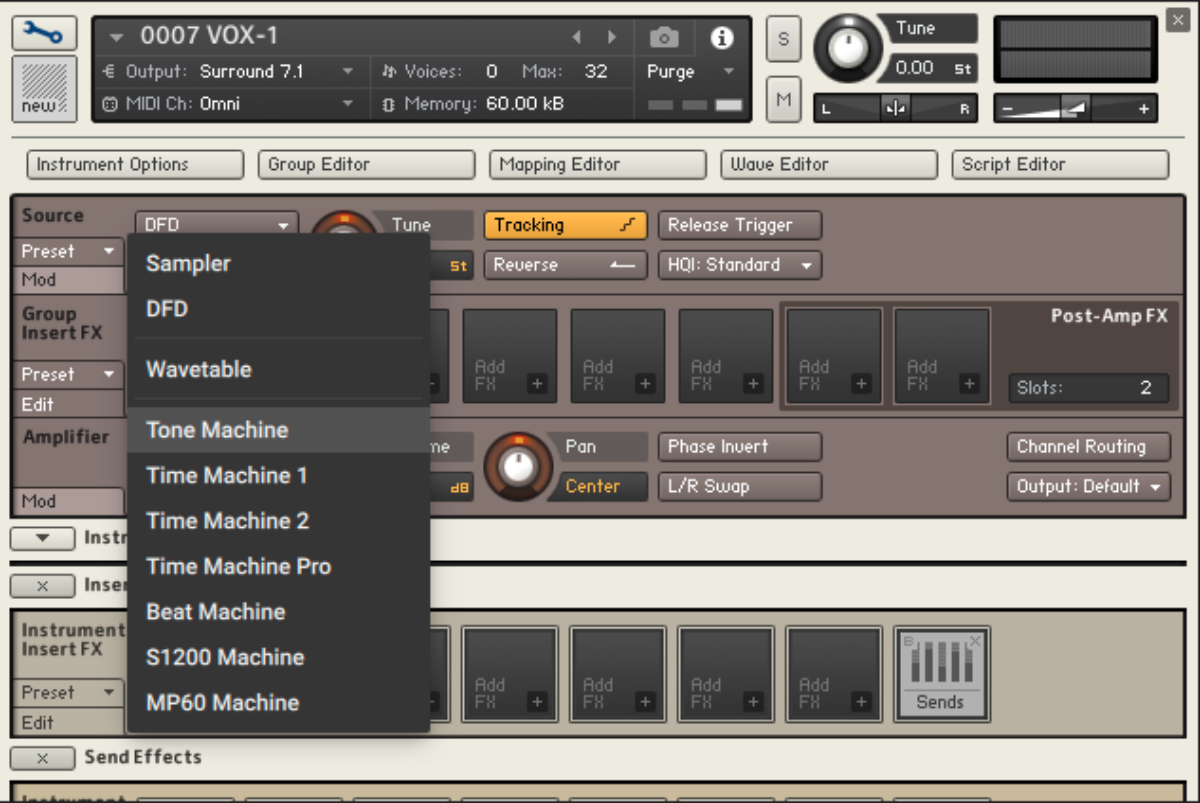
Alternatively, Vocalsynth 2 by iZotope features a comprehensive vocoder section that can detect the key of your melody and render harmonies for your melodies with ease.
4. Pitch bends and glides
Synthesizers offer a multitude of uses for pitch in music. Granular synthesis features pitch parameters that allow you to alter the pitches of individual grains to create unique textures. Conventional and wavetable synthesis methods also offer pitch controls including pitch bends and glides.
Pitch bending is controlled by a MIDI parameter that allows you to move the pitch of your note by a certain number of semitones. You can control this number of semitones in your synth patch settings.
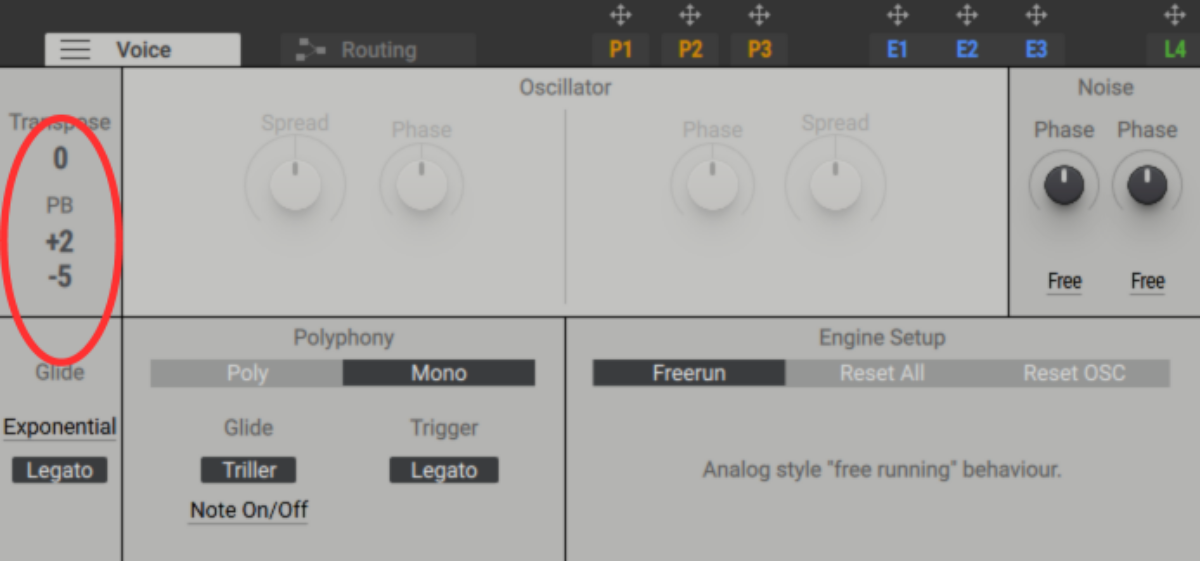
This is pitch bending up by 2 semitones:
This is pitch bending down by 5 semitones:
You can control pitch bending either manually with the pitch bend wheel found on your MIDI keyboard or automate it with an envelope or LFO.
A glide is a form of pitch bending that is created when a note moves from one pitch to another while playing through all of the frequencies between the two. Listen to these two notes without glide activated:
Now listen to them with glide activated, focusing on the pitch shifting occurring in between the notes:
Glides are usually activated by a button and time control in synthesizers.
This sound is used prominently on the arpeggiated bassline in “Danielle (smile on my face)” by Fred Again.
Start using pitch to enhance your music
Pitch is an essential concept that all beat makers and producers should be able to understand and implement. Once you’ve wrapped your head around the theory of pitch in music, it will help you create more compelling melodies and harmonies, use techniques like pitch correction and pitch shifting, and gain insight into a building block of synthesis.















